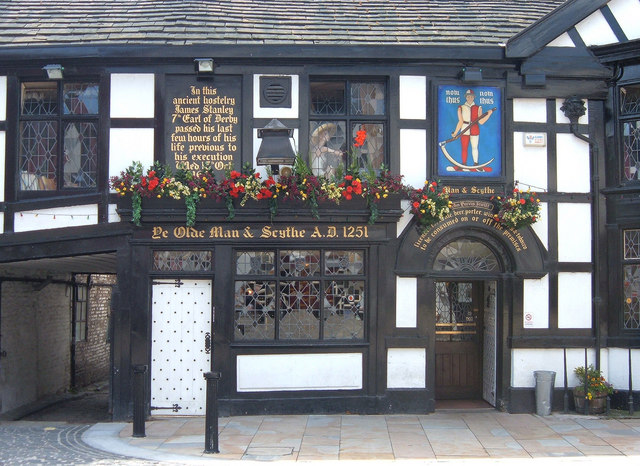Medieval Alehouses, Taverns, and Inns

In the late 14th century, when my books are set, alehouses and taverns would provide food and drink and inns would also provide accommodation for travellers. They make an excellent setting for the plot of a medieval novel. These were places where people met to socialise and talk. Particularly in towns, this made them cultural and political hot beds. Uprisings and mobs often had their origins in such places.
In England, inns were found mainly in towns and cities. They quickly became prominent landmarks and were usually located in a central position such as the town square, or in places where roads met. Geoffrey Chaucer of course immortalised these Inns in the Canterbury Tales, his Tabard Inn being a real hostelry in Southwark (the Abbot of Hyde originally built it so he and his good brothers had a place to stay when on business in London). But it wasn’t just pilgrims travelling to and from religious shrines who might need accommodation, there were a wide range of other travellers on the move, including merchants and court officials and monks travelling between religious houses. Inns could also be used for other purposes. “Ye Olde Trip to Jerusalem” in Nottingham, allegedly dating from 1189, was said to have acted as a recruitment centre for volunteers to accompany King Richard to the Holy Land on crusade. By the 1400s many larger inns would have private function rooms. These could be hired by the local town guilds or for private events. Many inns also provided locked rooms and strong boxes for storage of valuables.
Taverns and alehouses could be found in the biggest towns to the smallest villages. In places like London taverns were often owned by brewers and vintners as an outlet for their wares, in effect having a monopoly on what alcohol was served.
In the countryside the alehouse was one of the main places of recreation for the villager. An alehouse might not be in a permanent location, villagers would drink at the house of any neighbour who had recently brewed a batch of ale. Like their modern counterparts, villagers would pass the evening drinking. Inevitably this could lead to accidents, quarrels, and all too common acts of violence. The coroner’s records of the period are full of alcohol-related accidents, mishaps, injuries, and murders. Then as now, drinking to excess could lead to more than just a hangover… again all material for scenes in my novels.
Before Henry VIII split with the Catholic church, many taverns and inns had religious names. So we have, “The Anchor” (a reference to the Christian faith), “The Cross Keys” (the emblem of Saint Peter), “The Mitre” (a bishops headgear) and “The Ship” (the Noah’s Ark). Then we have names that have a connection with the crusades like “The Saracen’s Head” and “The Lamb and Flag” where the flag represented the crusaders and the lamb Jesus. Taverns names after saints, “The Christopher”, after the patron saint of travellers, and “The St. Julian”, who was the patron saint of hospitality.
There were more straightforward names, “The Ball”, “The Basket”, “The Bell”, “The Cross”, “The Cup”, “The Garland”, “The Green Gate”, “The Hammer”, “The Lattice”, “The Rose”. “The Swan” seems to have been very popular, there were six Swan’s in London alone in the 1420s. Other London taverns in the same period were named for birds as well, including “The Crane” and “The Cock”.
Bolton lies about six miles from where I type this. It’s a place I know well, I used to work in the centre of the town and occasionally went for a drink in what also claims to be one of Britain’s oldest pubs, “The Man and Scythe” or as its modern sign styles it, “Ye Olde Man and Scythe”. The earliest recorded mention of its name is in a medieval market charter of 1251. The present building dates from the 1630s and has been extensively rebuilt since then. The only part of the original medieval structure is probably the vaulted cellar. The pub is reputedly haunted, and the cellar appears to be one centre of the activity. (The few times I sat in the pub’s “front parlour” I can’t say I noticed any spirits except of the kind you can drink). The name of the pub derives from the crest of the Pilkingtons, who were a powerful family during the period with various branches scattered across the northwest of England.